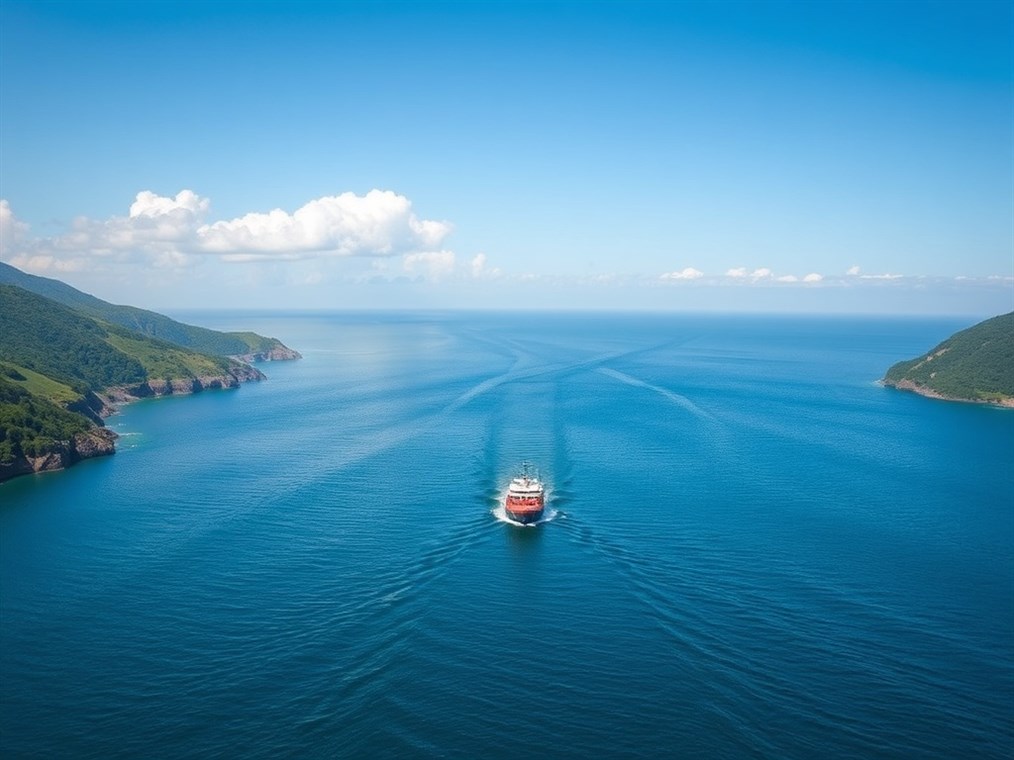
From the Great Lakes to the Ocean: A Waterway Wonder
FactsFrom the Great Lakes to the Ocean: A Waterway Wonder
Ever wondered if a ship could sail all the way from the Great Lakes to the open ocean? It’s a question that pops into many minds when you gaze out at those vast freshwater horizons. And the answer? Absolutely! It’s all thanks to an incredible feat of engineering: the St. Lawrence Seaway.
Think of the Seaway as a superhighway for ships, a watery path connecting the heart of North America to the Atlantic. Officially, it stretches from Montreal all the way to Lake Erie, including the Welland Canal. This joint project between the U.S. and Canada, finished back in 1959, was no small undertaking – costing a cool $470 million! But the idea itself? That goes back centuries, to the early days of Canadian settlements.
So, what does that mean in practical terms? Well, a ship can travel a staggering 3,700 kilometers (that’s about 2,300 miles) from Duluth, Minnesota, right on Lake Superior, all the way to the Atlantic. We’re talking about navigating through some 245,750 square kilometers (or 95,000 square miles) of water! Building the St. Lawrence Seaway in the 50s? People considered it one of the toughest engineering challenges ever faced.
The secret sauce of the Seaway is its system of locks. These are like elevators for ships, lifting them up or down to handle the different water levels between the Great Lakes and the ocean. The locks between Montreal and Lake Erie alone have to manage a 168-meter difference in height! Then you’ve got the “Soo” Locks, run by the U.S. Army Corps of Engineers, which help ships reach Lake Superior, a whopping 183 meters above sea level.
In total, the Seaway boasts 15 locks – 13 on the Canadian side and 2 in the U.S. Each one is a pretty impressive piece of construction, measuring 233.5 meters long, 24.4 meters wide, and 9.1 meters deep. Going through a lock takes about 45 minutes, and each one uses around 91 million liters of water – filling up in just 7 to 10 minutes! I remember reading about how they designed these things, and the precision is just mind-boggling.
Besides the locks, the Seaway also uses five canals to keep things flowing smoothly:
- South Shore Canal: Just a hop from Montreal to Lake St. Louis, with two locks.
- Beauharnois Canal: Connecting Lake St. Louis to Lake St. Francis with another pair of locks.
- Wiley-Dondero Canal: This one’s all-American, providing access to Lake St. Lawrence with two U.S. locks.
- Iroquois Canal: Short and sweet, with one lock and a water level control system.
- Welland Canal: The big one, linking Lake Ontario to Lake Erie with eight locks!
Now, there’s a limit to the size of ships that can use the Seaway, all thanks to those lock dimensions. The biggest they can be is 225.6 meters long, 23.8 meters wide, and 8.1 meters deep. Ships built to these specs are known as “Seawaymax” vessels.
However, some of the lake freighters – affectionately known as “Lakers” – are absolute behemoths! Some of these can stretch over 304.8 meters long. Sadly, these giants are stuck in the upper Great Lakes because they’re too big to squeeze through the Welland Canal or the St. Lawrence Seaway. But hey, the Poe Lock at the Soo Locks is massive, measuring 365.8 meters long and 33.5 meters wide.
The Great Lakes-St. Lawrence Seaway system is a real economic engine for both the U.S. and Canada. The region generates over $6 trillion U.S. dollars in GDP – if it were a country, it’d be the third-largest economy in the world!
Back in 2022, the Seaway system moved a whopping 135.7 million metric tons of cargo, worth US$26.1 billion. All that shipping supported over 240,000 jobs and generated $36 billion in economic activity. Plus, it cuts down on transportation costs. Each ship can carry as much as nearly a thousand trucks, while being way more fuel-efficient. That adds up to billions of dollars in savings every year.
The St. Lawrence Seaway isn’t just a marvel of engineering; it’s a shining example of what the U.S. and Canada can achieve when they work together. It’s jointly run by both countries, and from its opening in 1959, it’s been a critical link, connecting the Great Lakes to the Atlantic and fueling growth on both sides of the border. It’s a true testament to ingenuity and cooperation!
You may also like
Disclaimer
Categories
- Climate & Climate Zones
- Data & Analysis
- Earth Science
- Energy & Resources
- Facts
- General Knowledge & Education
- Geology & Landform
- Hiking & Activities
- Historical Aspects
- Human Impact
- Modeling & Prediction
- Natural Environments
- Outdoor Gear
- Polar & Ice Regions
- Regional Specifics
- Review
- Safety & Hazards
- Software & Programming
- Space & Navigation
- Storage
- Water Bodies
- Weather & Forecasts
- Wildlife & Biology
New Posts
- Diving Deep into Tangerine: More Than Just a Sunny Locale
- Jamaica Backpack Daypack Pockets Shopping – Review
- TEOYETTSF Climbing Backpack Multifunction Military – Buying Guide
- The Curious Case of Cavendish’s Classroom: Where Did This Science Star Study?
- Dragon Backpack Insulated Shoulder Daypack – Buying Guide
- ROCKY Hi-Wire Western Boots: A Rugged Review After a Month on the Ranch
- Vertical Curbs: More Than Just Concrete Barriers
- Regatta Modern Mens Amble Boots – Honest Review
- YMGSCC Microfiber Leather Sandals: Beach to Boardwalk, Did They Hold Up?
- Tangier: More Than Just a Backdrop in “Tangerine”
- DJUETRUI Water Shoes: Dive In or Doggy Paddle? A Hands-On Review
- Barefoot Yellow Pattern Hiking 12women – Is It Worth Buying?
- Koa Trees: How Fast Do These Hawaiian Giants Really Grow?
- DDTKLSNV Bucket Hat: Is This Packable Sun Shield Worth the Hype?